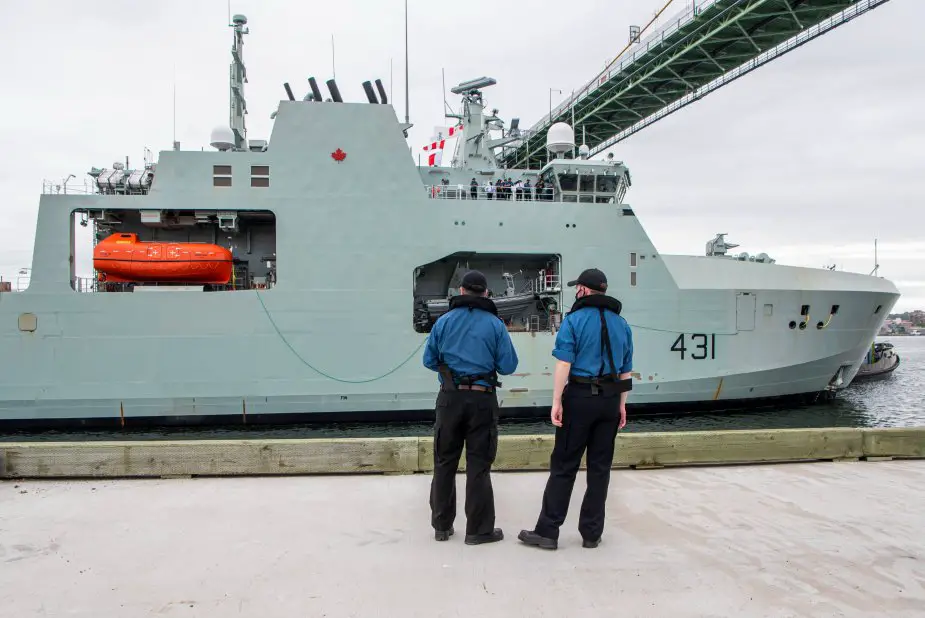Breaking news
Royal Canadian Navy receives second Offshore Patrol Vessel.
According to information published by the Government of Canada on July 23, 2021, the delivery of the second of six Arctic and Offshore Patrol Ships (AOPS), Her Majesty’s Canadian Ship (HMCS) Margaret Brooke, in Halifax marks an important milestone both for the Royal Canadian Navy (RCN) and for the ship’s crew.
Follow Navy Recognition on Google News at this link
 Harry DeWolf-class offshore patrol vessel HMCS Margaret Brooke AOPV 431 (Picture source: Royal Canadian Navy)
Harry DeWolf-class offshore patrol vessel HMCS Margaret Brooke AOPV 431 (Picture source: Royal Canadian Navy)
The first of the six AOPS, Harry DeWolf, was delivered in July 2020 and officially commissioned into the RCN June 2021. The third AOPS, HMCS Max Bernays, will be launched later in 2021.
The AOPS will primarily conduct presence and surveillance missions along Canada’s maritime approaches, to know who is operating in our waters and be prepared to react to a wide variety of incidents. They will also support other government departments and agencies, such as the Canadian Coast Guard, that are focused on ensuring safe navigation of shipping in arctic waters.
These contemporary and multifunctional ships will be at the core of an enhanced Canadian Arctic presence, and will effectively and strategically complement the capabilities of our current and future warships through critical reconnaissance and surveillance operations.
They will also be capable of participating in a wide variety of international operations such as anti-smuggling, anti-piracy, and international security and stability. These ships will be able to contribute to humanitarian assistance, emergency response and disaster relief domestically and internationally, and undertake a diverse range of missions worldwide.
The Harry DeWolf-class offshore patrol vessels are warships of the Royal Canadian Navy (RCN) built by the Government of Canada Arctic and Offshore Patrol Ship (AOPS) procurement project, part of the National Shipbuilding Procurement Strategy (now called National Shipbuilding Strategy). In July 2007 the federal government announced plans for acquiring six to eight icebreaking warships for the RCN.
The ships are designed to displace 6,440 metric tons (6,340 long tons), making it the largest class of naval vessels produced in Canada in the past 50 years with the previous being the retired Protecteur-class replenishment oiler.
They are capable of outfitting multiple payload options such as shipping containers, underwater survey equipment, or a landing craft. The vessels have a 20-tonne (20-long-ton) crane to self-load/unload, and a vehicle bay to carry vehicles for deployment over the ice. The design also calls for an enclosed cable deck and forecastle to better cope with the Arctic environment. On the open sea, the ship has fin stabilizers to reduce roll that are retractable during ice operations.
The vessels have a diesel-electric powertrain with four 3.6-megawatt (4,800 hp) diesel generators producing electricity for two 4.5-megawatt (6,000 hp) propulsion motors.


























